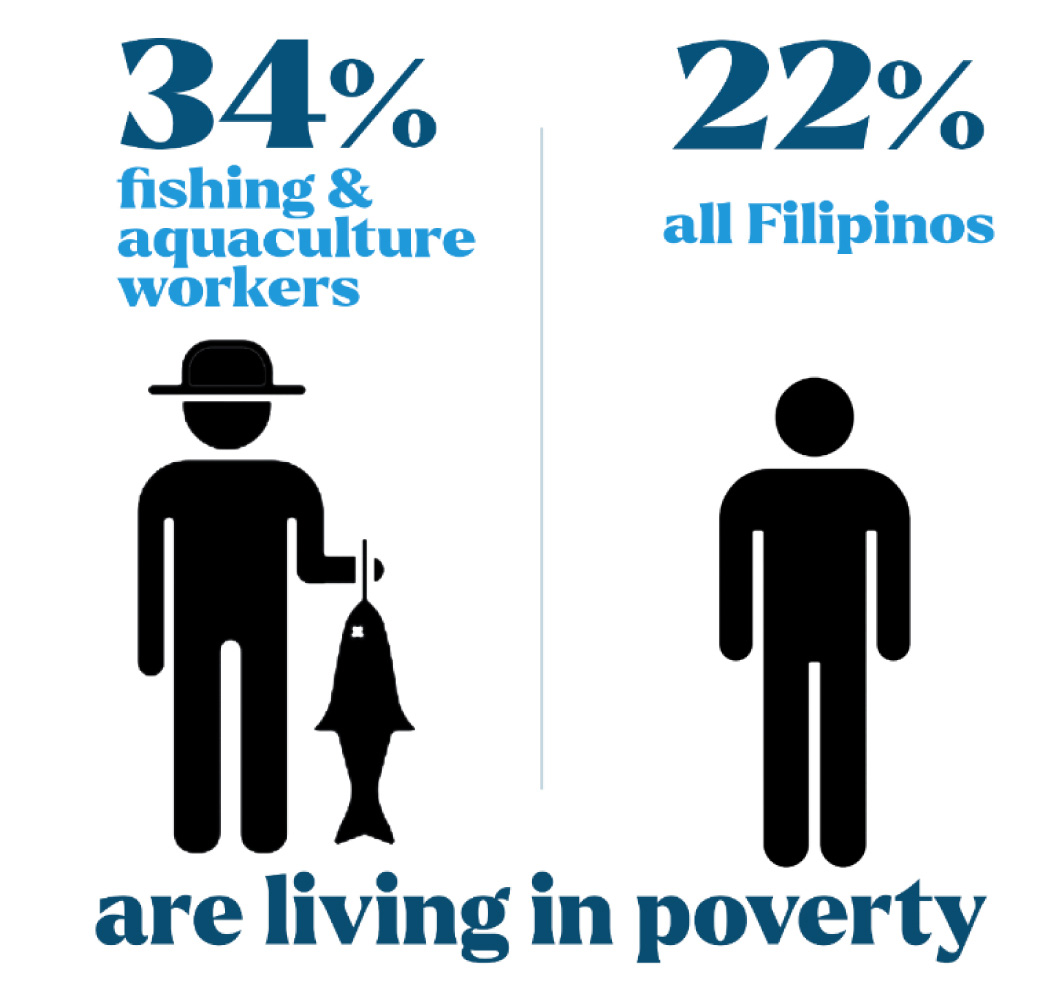As food security issues weigh on the Philippines: Here is where fisheries management might be headed

By Edwina D. Garchitorena and Caterina Maria Po, Environmental Defense Fund
FISHERIES are a vital source of nutrition, jobs, and community well-being for millions of Filipinos — and yet they are increasingly at risk from climate change, overfishing and data-poor management structures. To enhance community well-being and improve the lives of fishers and those involved in the industry, we must take steps to build greater resilience into the way we manage this vital national resource.
But there are challenges to creating greater sustainability in tropical fisheries. For one thing, they’re complex, with many species and types of fishing gear involved, where different species can be caught at the same rate. In addition, catches are brought into multiple small landing areas, which makes effective monitoring and sustainable management extremely challenging. The situation is made even more complex by climate change, which will have oversized impacts on catch, availability of fish, and species. That said, overfishing is an equally critical driver of declines in production. We have been systematically depleting our fishery resources since the 1950s, from nearshore reef and soft-bottom species (such as shellfish, and rabbitfish) to offshore ground fish and pelagic fish (such as tuna, skipjack, sardines, mackerel, and scad) in a kind of slash and burn pattern.
 Although data show a steady increase in production from 1950 to 2010, a closer look indicates that fleets started plying the nearshore areas, and as the more valuable reef and soft-bottom finfish and shellfish species ran out, they mechanized and moved further and further out in search of catch. Today the Philippine fisheries are composed primarily of sardines, galunggong (scad) and other small pelagics and forage fish like anchovies, which are important sources of food for larger fish such as tuna, as well as for humans.
Although data show a steady increase in production from 1950 to 2010, a closer look indicates that fleets started plying the nearshore areas, and as the more valuable reef and soft-bottom finfish and shellfish species ran out, they mechanized and moved further and further out in search of catch. Today the Philippine fisheries are composed primarily of sardines, galunggong (scad) and other small pelagics and forage fish like anchovies, which are important sources of food for larger fish such as tuna, as well as for humans.
The impacts of the way we have fished, and continue to fish, include shifts in ecosystem balances, biodiversity loss, changes in species composition, and reductions in volume and quality of fish. And we have not started documenting the adverse effects of climate change on our fish stocks.
COVID-19 has also affected the sector. The United Nations Food and Agriculture Organization (FAO) has noted, “The impacts of COVID-19 have affected fisheries management processes. Some fish assessment surveys have been reduced or postponed; obligatory fisheries observer programs have been suspended; and this postponement of science and management meetings will delay implementation, monitoring, and enforcement of these measures.
A lack of monitoring and enforcement may encourage a less responsible level of management, monitoring, and control of fishing operations and there is a risk that levels of illegal, unreported and unregulated (IUU) fishing will increase.”
Now, more than ever, the need for the scientific management of fishing operations, driven by evidence and supported by its stakeholders, is key.
Within the context of the pandemic, NEDA released its “We Recover As One” paper, stating that “the new normal for the agriculture and fishery (A&F) sector calls for a heightened policy focus on food security. As one of the key production sectors, NEDA emphasized the need for the government to “continue the strict enforcement of the government’s policy measures to ensure agriculture/food production and supply chain.”
Fisheries Management Area (FMA) 8, on the country’s eastern seaboard, covers the Leyte Gulf from eastern Samar to the Dinagat Islands, as well as the Surigao Strait and the waters around Siargao. It is among the most vulnerable areas to climate change, typhoons, and extreme weather events, as evidenced by Typhoon Yolanda and the more recent Typhoon Odette.
FMA 8 fisheries are typical of the tropics – they are complex multispecies and multi-gear fisheries, primarily small-scale or municipal, with limited data and information for sound decision making.
The planning process, guided by the EAFM principle, integrates both science (including climate) and stakeholder involvement, towards a fisheries management plan that is based on biological as well as social and economic goals expressed by stakeholders. Management measures will be chosen in consultation with fishers and communities, to ensure a higher level of compliance. While the final plan will be specific to the area and the particular fish stocks within the FMA, the process will set a solid foundation so that it can be replicated in other FMAs across the Philippines.
Edwina D. Garchitorena is Philippine director of the Oceans Program for Environmental Defense Fund. Caterina Maria Po is a recent graduate of the University of Hawaii at Mānoa, where she studied natural resource management. She aspires to a career as a conservationist.





